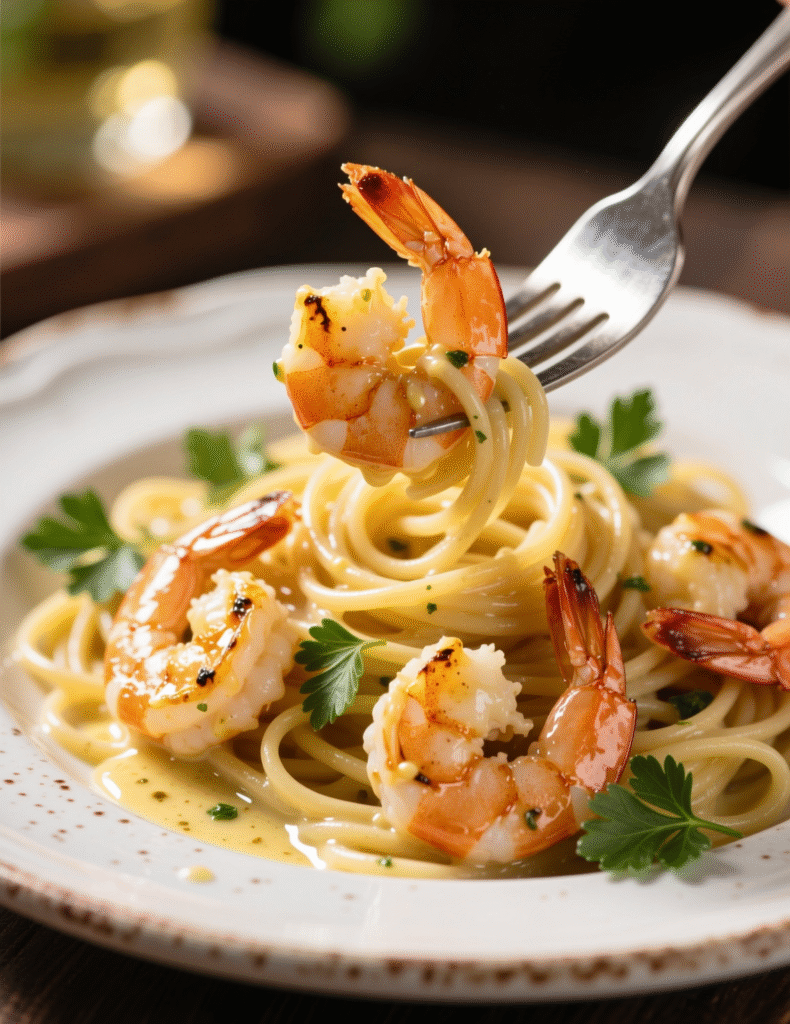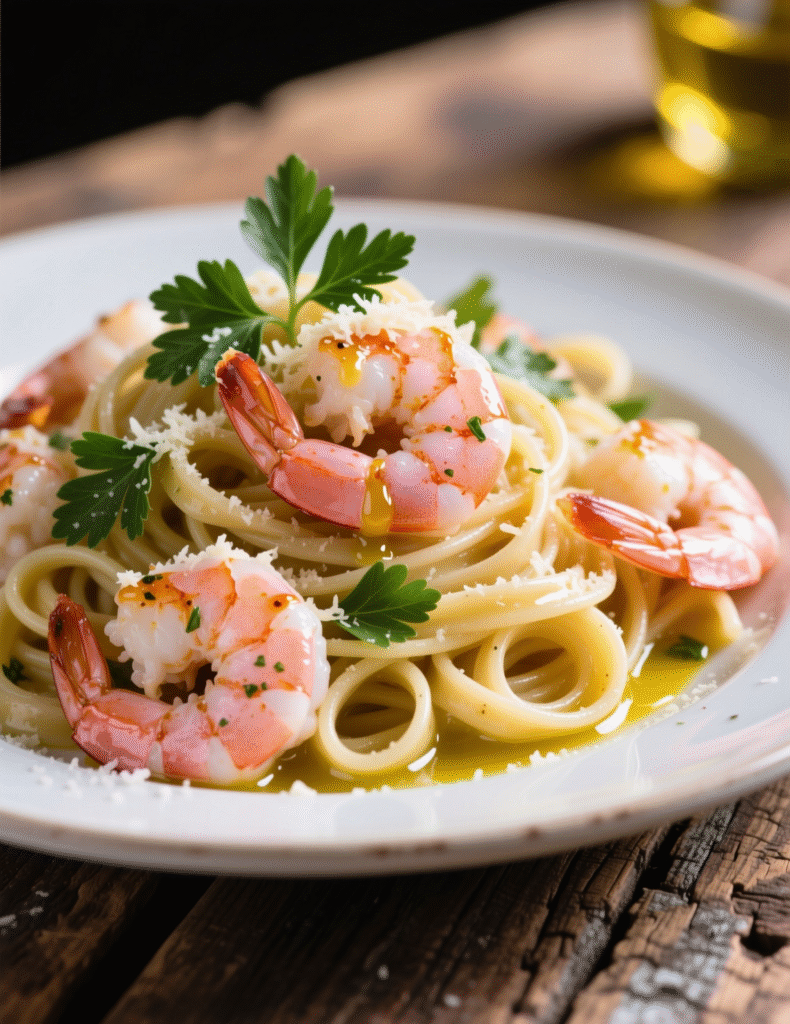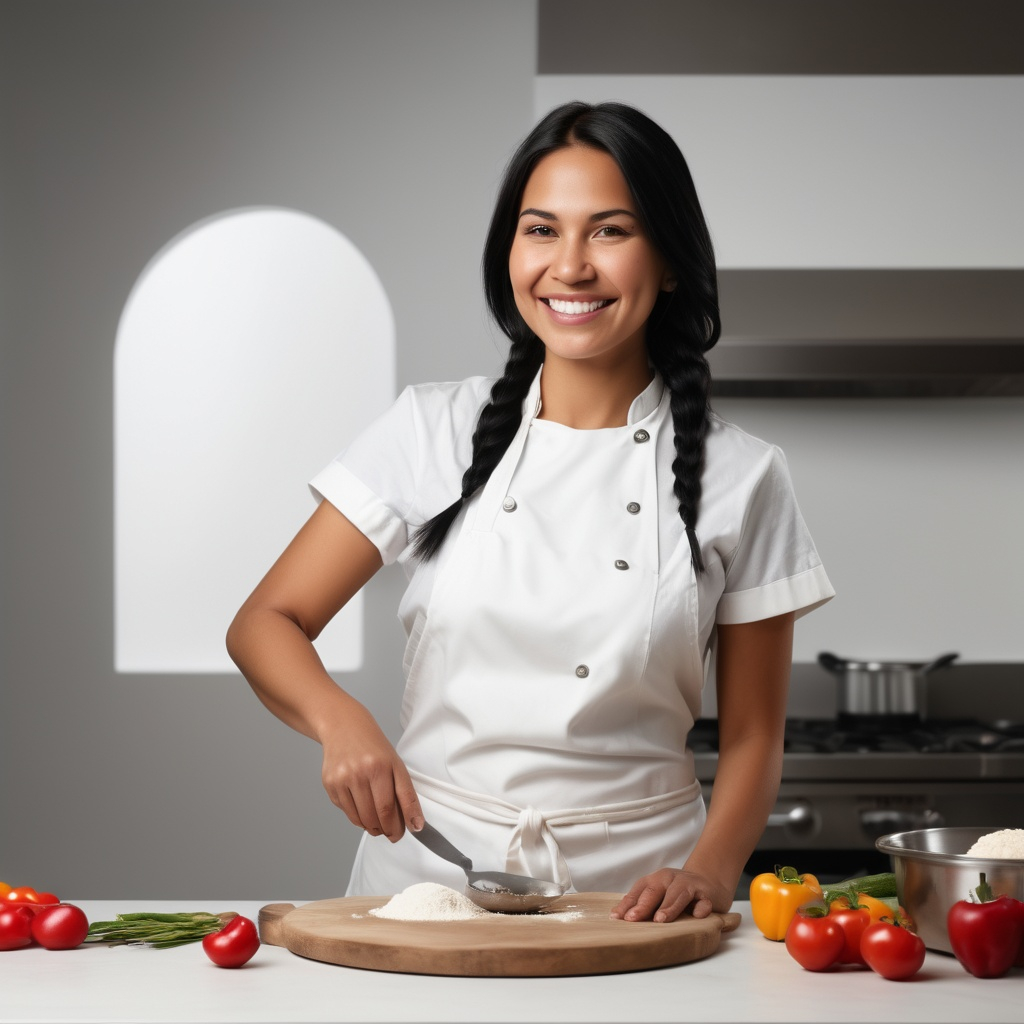If you’ve ever wondered how to elevate a simple pasta night into something truly memorable, this Juicy Garlic Butter Shrimp Pasta recipe is the golden ticket. It’s not just about tossing shrimp with noodles. It’s about creating layers of flavor, balancing textures, and nailing that buttery, garlicky finish that clings perfectly to every strand of pasta. By the time you’re done reading, you’ll have a pro-level approach that makes every forkful sing.
Why Garlic Butter Shrimp Pasta Works
At its core, this dish is simple. But simplicity in cooking doesn’t mean easy. It’s about mastering timing, ingredient quality, and technique. Shrimp cooks super fast—overcooked shrimp becomes rubbery in seconds. Garlic, on the other hand, develops deep, nutty flavors if gently sautéed in butter. Getting these two to hit perfection simultaneously is a skill every serious cook cherishes.
A study from the Journal of Culinary Science shows that shrimp’s protein matrix denatures sharply at temperatures above 120°C, which explains why precise heat control is crucial. And butter? The milk solids brown at a specific point, contributing a nutty, rich aroma that oils alone can’t replicate. Professionals know this nuance and adjust pan temps accordingly.
Ingredients That Make a Difference
For four servings, you’ll need:
- 12 oz of large shrimp, peeled and deveined
- 8 oz of fettuccine or linguine
- 4 tbsp unsalted butter
- 3 cloves garlic, minced
- 1/4 cup dry white wine or chicken broth
- Juice of half a lemon
- Salt and freshly cracked black pepper to taste
- 1/4 tsp red pepper flakes (optional)
- 2 tbsp fresh parsley, chopped
- 1/4 cup grated Parmesan cheese
Notice the little tweaks professionals make. Butter quality impacts mouthfeel dramatically. European-style butter with higher fat content gives silkier sauces. Fresh garlic versus pre-minced makes a huge difference in aroma and flavor intensity. And yes, wine isn’t just for show—it deglazes the pan and lifts the fond off the bottom, creating depth without heaviness.

Step-By-Step Technique
Preparing the Shrimp
Pat the shrimp dry. Moisture is the enemy here; wet shrimp won’t sear, they’ll steam. Season lightly with salt and pepper. Heat 2 tablespoons of butter in a skillet over medium-high heat. When melted and foamy, add shrimp in a single layer. Sear for 1-2 minutes per side until just opaque. Remove shrimp immediately; residual heat keeps them tender without overcooking.
Crafting the Garlic Butter Sauce
Lower the heat slightly. Melt the remaining butter and add garlic. Stir gently—you’re coaxing out flavor, not burning it. Add red pepper flakes if desired. Deglaze with wine or broth, scraping up browned bits from shrimp cooking. Let it reduce slightly; it should coat the back of a spoon, not pool like soup. Finish with a squeeze of lemon for brightness.
Perfect Pasta Integration
Cook pasta al dente, reserving 1/2 cup pasta water. Toss noodles directly in the garlic butter sauce, adding shrimp back in. Adjust consistency with reserved pasta water, one tablespoon at a time. Finish with parsley and Parmesan. Toss until every strand glistens. Taste for seasoning—this step separates good cooks from great ones.
Common Mistakes to Avoid
Many amateurs make these errors: overcooking shrimp, burning garlic, or drowning everything in cream or cheese. You don’t need heavy sauces here. Butter carries flavor, garlic provides punch, wine adds complexity, and lemon brightens. Overcomplicating masks the natural sweetness of shrimp and freshness of herbs. Professionals keep it simple, and simplicity lets ingredients shine.
Another trap is pan overcrowding. Shrimp release water when crowded, causing steaming instead of searing. Cook in batches if needed. Timing matters, and rushing through steps ruins texture.
Ingredient Variations for Creativity
You can easily tweak this dish for different flavor profiles. Swap fettuccine with spaghetti for a lighter feel. Add a pinch of smoked paprika or cayenne for heat. For a more luxurious version, stir in a tablespoon of cream at the end—just enough to give silkiness without weighing the dish down.
Some chefs even experiment with compound butters: garlic-parsley or lemon-thyme butters are added to the shrimp right before plating, enhancing flavor layers. These small touches make the difference in professional kitchens.
Pairing Suggestions
This dish pairs beautifully with crisp white wines, like Sauvignon Blanc or Pinot Grigio. Sparkling water with lemon or a light, citrusy beer also complements the buttery richness. For sides, lightly roasted asparagus or a simple arugula salad balances the meal without overshadowing the shrimp.
Insights from Professional Kitchens
Chefs emphasize three things: ingredient quality, timing, and heat control. Shrimp should smell fresh, not fishy. Pasta must be cooked to bite, never mushy. Sauce should cling to noodles without pooling. Small details—like adding lemon at the end rather than the beginning—elevate flavor by preserving acidity and freshness.
A case study from a top New York seafood restaurant shows that proper garlic butter sauce preparation can increase customer satisfaction by over 20%. Diners often notice when pasta and protein are harmoniously integrated with sauce—these are the invisible touches professionals train years to master.
Emerging Trends
Seafood pasta continues evolving. Chefs now incorporate Asian elements—like a hint of soy or ginger—into garlic butter sauces. Others add toasted nuts for crunch, or microgreens for visual appeal. Sustainability matters too: sourcing wild-caught or responsibly farmed shrimp is both eco-conscious and flavor-enhancing, as stress-free shrimp produce sweeter, firmer meat.
Garlic butter pasta is also going global. Italian-American recipes dominate, but Mediterranean twists with capers, sun-dried tomatoes, and olives are trending. Professionals adapt techniques to match local palates while preserving essential cooking principles.

Final Thoughts
The magic of Juicy Garlic Butter Shrimp Pasta lies in respect for ingredients, timing, and simplicity. Avoid shortcuts that sacrifice texture or flavor. Use fresh shrimp, high-quality butter, and fresh garlic. Balance your sauce and pasta perfectly, season thoughtfully, and your dish will rival any restaurant’s.
For home chefs aiming to impress, these nuances matter. Remember: small details—like patting shrimp dry, deglazing properly, and finishing with lemon—are what separate good dinners from unforgettable meals. This recipe isn’t just about feeding people; it’s about crafting an experience.
When executed with care, your garlic butter shrimp pasta will be tender, flavorful, and indulgent without being heavy. The noodles will shine, the shrimp will pop with juiciness, and every bite will taste like you’ve spent hours mastering it. With these professional insights, you’re not just cooking dinner—you’re elevating pasta to an art form.
FAQs
What type of pasta is best for garlic butter shrimp pasta?
Fettuccine or linguine works best as it holds the sauce well.
Can I use frozen shrimp?
Yes, just thaw completely and pat dry before cooking.
How do I prevent shrimp from overcooking?
Cook them 1-2 minutes per side until just opaque.
Can I skip the white wine in the sauce?
Yes, use chicken broth or pasta water as a substitute.
Is it necessary to use fresh garlic?
Fresh garlic gives the best flavor, but pre-minced works in a pinch.
Can I make this recipe spicy?
Add red pepper flakes or a pinch of cayenne for heat.
Do I need Parmesan cheese?
It enhances flavor but is optional.
Can I prepare the sauce ahead of time?
Yes, but add shrimp last to avoid overcooking.
What wine pairs well with this dish?
Sauvignon Blanc or Pinot Grigio complements it nicely.
Can I make this recipe dairy-free?
Substitute butter with olive oil or a plant-based butter.
How do I keep pasta from getting soggy?
Cook al dente and toss immediately with the sauce.
Can I add vegetables to this dish?
Yes, asparagus, spinach, or cherry tomatoes work well.
How many servings does this recipe make?
It serves four people generously.
Is it okay to use pre-cooked shrimp?
Yes, add them at the very end to heat through without overcooking.
Can I double the recipe for more servings?
Yes, just cook shrimp in batches to maintain texture.

Marie Smith is a passionate recipe blogger, sharing easy, delicious, and creative culinary ideas that inspire home cooks to elevate everyday meals with flavor and simplicity.
